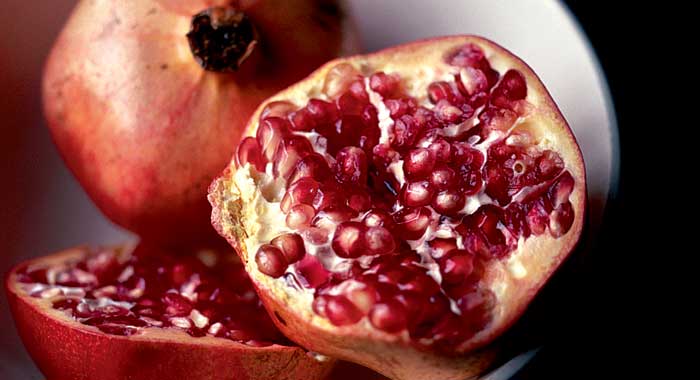
Pronounce it: pom-ee-gran-at
Now mainly grown in America, Spain, the Middle East and India, pomegranates originated in the area from Northern India to Iran. They have a round shape, like an apple, with a hard, shiny skin blushed with red or yellow. Inside, scores of edible little white seeds are held in jewel-like, ruby-coloured sacs filled with sweet, juicy flesh. The sacs themselves are packed in a bitter, pale yellow pith.
Pomegranates have always been highly prized for their flavour, but their recent emergence as a highly nutritious superfood, packed with antioxidant vitamins, has made them even more popular. The skin and the pith should not be eaten.
Read our guide on the health benefits of pomegranates.
Availability
All year round.
Choose the best
Look for pomegranates with unblemished, shiny skins. Those that feel heavy for their size are the juiciest. Avoid any with soft patches.
Prepare it
Cut open across its middle then, holding a half over a bowl, cut-side down, bash the skin with a rolling pin. The seeds should pop out.
To extract the juice, put the seeds in a sieve and press out the juice with the back of a spoon. Avoid crushing the sac membranes too much as they can taste bitter. Be careful when preparing pomegranates, as the juice stains.
Store it
In a perforated bag in the fridge for a couple of weeks.
Cook it
Eat straight from the shell using a toothpick. Scatter the juicy sacs over salads, fresh-cut fruit; use in marinades or rice dishes.
Be the first to comment on "Pomegranate"